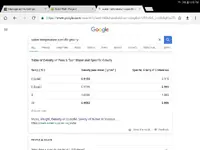arizau
Silver Member
I'm glad that you posted and yes it is your post! I thought that you may be harassed so I posted it anonymously.
GG it was the 2 bucket method with the test cap that we saw on YouTube that got us thinking of how we can do it with quantities of paydirt. It worked so well in the bucket but we wanted to automate it. In came a cone bottom tank, some bullhead fittings, hoses ECT! It works great!
Do I have this right for the cone concentrator? Fill water becomes waste/overflow water as the spin and/or added water raises the level to a drain hole where it is directed by hose or piping to another, previously filled, container from which water is pumped into the cone tank by directing it horizontally along the perimeter of the wall to create the vortex.



 no disrespect and I didn't use emogy that showed up but wow thats pretty good pay in the overburdan and I would be happy if the gravel I happen to mine was consistantly a gram a yard.
no disrespect and I didn't use emogy that showed up but wow thats pretty good pay in the overburdan and I would be happy if the gravel I happen to mine was consistantly a gram a yard.